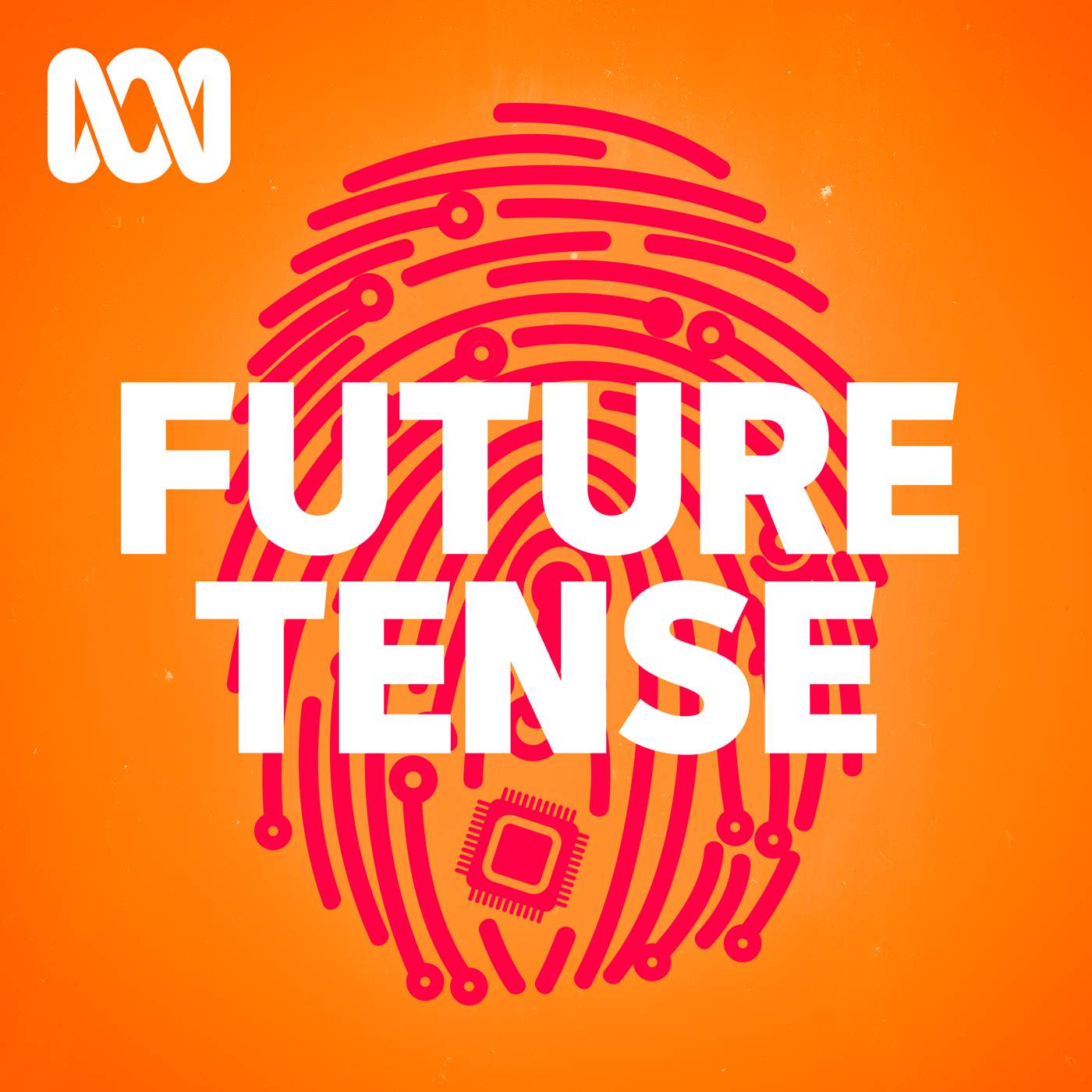
Heliox: Where Evidence Meets Empathy 🇨🇦
Join our hosts as they break down complex data into understandable insights, providing you with the knowledge to navigate our rapidly changing world. Tune in for a thoughtful, evidence-based discussion that bridges expert analysis with real-world implications, an SCZoomers Podcast
Independent, moderated, timely, deep, gentle, clinical, global, and community conversations about things that matter. Breathe Easy, we go deep and lightly surface the big ideas.
Curated, independent, moderated, timely, deep, gentle, evidenced-based, clinical & community information regarding COVID-19. Since 2017, it has focused on Covid since Feb 2020, with Multiple Stores per day, hence a sizeable searchable base of stories to date. More than 4000 stories on COVID-19 alone. Hundreds of stories on Climate Change.
Zoomers of the Sunshine Coast is a news organization with the advantages of deeply rooted connections within our local community, combined with a provincial, national and global following and exposure. In written form, audio, and video, we provide evidence-based and referenced stories interspersed with curated commentary, satire and humour. We reference where our stories come from and who wrote, published, and even inspired them. Using a social media platform means we have a much higher degree of interaction with our readers than conventional media and provides a significant amplification effect, positively. We expect the same courtesy of other media referencing our stories.
Heliox: Where Evidence Meets Empathy 🇨🇦
🤦 The Quiet Lesson from Collective Failure: UK COVID-19 Inquiry M2 V1
Please take a look at our related Substack episode.
What strikes me most about the unfolding narrative of governance failure during the pandemic is not the dramatic collapse of things, but the quiet, incremental erosion of readiness. Systems don't fail in a single catastrophic moment. They fail because a plan written in 2011 continues to govern decisions in 2020. They fail because a chief medical officer's warning on January 29th arrives as a voice in a room that is still discussing other matters. They fail because intelligent people—well-meaning people—can be trapped in institutional thinking.
Module 2, 2A, 2B, 2C Report - Core decision-making and political governance - UK Covid-19 Inquiry
This is Heliox: Where Evidence Meets Empathy
Independent, moderated, timely, deep, gentle, clinical, global, and community conversations about things that matter. Breathe Easy, we go deep and lightly surface the big ideas.
Thanks for listening today!
Four recurring narratives underlie every episode: boundary dissolution, adaptive complexity, embodied knowledge, and quantum-like uncertainty. These aren’t just philosophical musings but frameworks for understanding our modern world.
We hope you continue exploring our other podcasts, responding to the content, and checking out our related articles on the Heliox Podcast on Substack.
About SCZoomers:
https://www.facebook.com/groups/1632045180447285
https://x.com/SCZoomers
https://mstdn.ca/@SCZoomers
https://bsky.app/profile/safety.bsky.app
Spoken word, short and sweet, with rhythm and a catchy beat.
http://tinyurl.com/stonefolksongs
Curated, independent, moderated, timely, deep, gentle, evidenced-based, clinical & community information regarding COVID-19. Since 2017, it has focused on Covid since Feb 2020, with Multiple Stores per day, hence a large searchable base of stories to date. More than 4000 stories on COVID-19 alone. Hundreds of stories on Climate Change.
Zoomers of the Sunshine Coast is a news organization with the advantages of deeply rooted connections within our local community, combined with a provincial, national and global following and exposure. In written form, audio, and video, we provide evidence-based and referenced stories interspersed with curated commentary, satire and humour. We reference where our stories come from and who wrote, published, and even inspired them. Using a social media platform means we have a much higher degree of interaction with our readers than conventional media and provides a significant amplification effect, positively. We expect the same courtesy of other media referencing our stories.
Welcome back to the Deep Dive. Today, we're tackling a subject that is, well, it's immense. We're looking at the agonizing dilemma of governmental decision making during the UK's COVID-19 response. It's a heavy topic, and I think it's impossible to even begin without grounding ourselves in the sheer scale of the tragedy here. Absolutely. You look at the official figures, and they are just appalling. Over 230,000 deaths across the UK where COVID-19 was mentioned on the death certificate.- 230,000.- That number, that horrific loss, it has to frame every single policy discussion, every delay and every choice we're about to analyze.- It does, and so our focus for this deep dive is going to be squarely on that core political governance. We're looking at the UK government and the devolved administration. So Scotland, Wales and Northern Ireland from the very beginning, January 2020, all the way through to May 2022. And our main source for this is the UK COVID-19 inquiry, which has done this incredible job of pulling back the curtain on what was happening behind the scenes, decision making under just unimaginable fire. Under fire is right. The inquiry made it so clear that these decisions, especially about restrictions, were hugely controversial. And taken under extreme pressure. You have to remember, policymakers and ministers were often operating without the full picture. Right. Without complete data. No, and without a full understanding of the epidemiological position, which meant they were almost constantly in a reactive posture. You're just trying to catch up. So our mission today is really to unpack how these governments went from an outdated old pandemic plan to, well, to an enforced suppression strategy. We want to try and identify the structural flaws, the scientific pivots that happened. And this is the critical part for learning. Yes, the absolute devastating consequences of timing. And, you know, if we ever risk letting this become just a sterile policy debate, we have to bring it back to the human element. There's a quote from Fiona Humphreys who was speaking for the Northern Ireland COVID-19 bereaved families for justice. I remember this. It's incredibly powerful. It is. She said, and I'm quoting her here, I feel that my mother was getting more and more nervous going into the second lockdown. And she goes on, doesn't she, about the mixed messaging? She does. It was a case of keep away to protect them. Meanwhile, other people were in and out of each other's bubbles in houses. There was no consideration for the elderly. I feel they were just numbers. My mom caught COVID and died in the hospital. That just, it cuts right to the heart of it, doesn't it? That quote spotlights the core tension. The official message was protect the elderly, but the actual policy decisions, the mixed rules for younger people mixing, It just seemed to completely overlook their vulnerability. It's that lack of clarity, that inconsistency, especially around things like internal travel and mixing households. It just destroyed trust and safety, really, from the very beginning. So to understand the root cause of all this, the mixed messages, the delay, we have to go right back to the start. Right back to phase one, back when there was still this dangerous illusion of time. So let's start there. January and February 2020. Before we even get into the politics of it, we have to understand the science that policymakers were, well, wrestling with, and in many cases, just failing to grasp. You really can't overstate the importance of these scientific concepts. They literally dictated whether a policy would succeed or fail. The single most critical metric was the reproduction number. You hear it called R or R0 or RT. And this is basically how fast the fire is spreading. It's exactly that. It's just the average number of people that one infected person will pass the virus onto at a given time. And that number is the ultimate test of whether you're in control. If R is above one, the epidemic is growing. It's running away from you. Exponentially. And if it's below one, you're shrinking it. You're winning. Every single restriction, every guideline, every lockdown was at its heart an attempt to hammer that R number below one. But the thing that made COVID-19 so different, the thing that the UK just hadn't planned for, was this idea of asymptomatic transmission. The silent spread. Professor Sir Michael McBride, who was the chief medical officer for Northern Ireland, he was very plain about this. He said that planning for a pandemic with significant asymptomatic transmission requires a very different response than one for, say, an influenza-like illness where you can see who's sick. So what were the early signals? How soon did they know about this silent killer? Alarmingly early. Even back in February 2020, you had modelers from Imperial College looking at data, especially from repatriation flights, and they estimated that one third, a full 33 percent of COVID-19 infections, were asymptomatic. A third. That's a staggering number. It is. And that single piece of information should have changed everything. It should have instantly rewritten the entire plan. This means two things, right? At least two things. First, mass testing and contact tracing have to be universal. You can't just rely on symptoms anymore. It's not enough. And second, personal protective equipment, PPE, needs to be used way more widely, not just in hospitals, but out in the community. So, okay, the science is screaming that there's a silent, fast-spreading enemy. It requires mass testing, total vigilance. Why was the UK's initial policy what you call the doctor of delay? Why were they just trying to slow it down? And this is where we hit the structural rigidity that was just baked into the system. The UK's initial response was almost entirely based on the 2011 UK influenza pandemic preparedness strategy. A plan that was almost a decade old. A decade old and for the wrong virus. That strategy was, by its very nature, a mitigation approach, not a suppression approach. Can you break down what that difference really means, mitigation versus suppression? Sure. Mitigation accepts that the spread of the virus is inevitable. You can't stop it, so you just try to slow it down, flatten the curve to protect the health care system from one big peak. Suppression is far more aggressive. You use stringent measures like lockdowns to try and crush community transmission down to zero or close to it. And the 2011 plan made some assumptions that just proved to be disastrous for a novel coronavirus. Utterly disastrous. It was founded on the belief that the spread was inevitable and that severe interventions, you know, locking down the economy, would be a waste of public health resources. A waste. That's the direct quote. It assumed the disease wouldn't be that severe, that immunity would build up quickly and critically, that most spread would be symptomatic so you could track and isolate people. All of which were wrong. Every single one. So when you're faced with a virus that is severe, spreads silently and gives uncertain immunity, that foundational plan becomes a blueprint for failure. And that mitigation mindset, it even constrained the advice that the top scientists in the country were giving. It constrained SAGE. Precisely. The inquiry found SAGE was operating under what you could almost call political self-censorship. So they weren't giving the advice they thought was necessary, but what they thought would be listened to. That's it. They didn't even model severe measures like a mandatory lockdown until mid-March 2020. And you have to ask why. It's because they thought such a policy just wouldn't be politically palatable to a government that was still completely wedded to this mitigation doctrine. They were giving advice within perceived political boundaries, not necessary ones. But the hard warnings, the data, it was coming in well before March. So what were ministers choosing to ignore or to deprioritize? The contrast between the scientific alarm bells and the mood in Whitehall is just stark. By late January 2020, Imperial College modeling had already pegged the initial reproduction number R0 at somewhere between two and three. So every infected person was infecting two or three more people. It's already out of control. It's already exponential. And importantly, on January 29th, Professor Whitty specifically noted to Matt Hancock that there was credible evidence of asymptomatic transmission within Germany. January 29th. That was the moment. That was the point where the mitigation strategy should have been torn up and thrown in the bin. And yet the political machine was just carrying on as normal. That is the disconnect. You have Lee Cain, the director of communications at the time, admitting in the inquiry that COVID-19 was not considered as the most pressing issue. or even in the top five in January 2020. Not in the top five. The machinery of government was treating it as just one of many issues on the prime minister's desk, not a once-in-a-generation national emergency that demanded absolute total focus. Part of this failure came down to how they interpreted the risk, right? Specifically, this issue. reasonable worst-case scenario, the RWCS. Yes, this is a really key point. Initially, Sage was working with the old influenza worst-case scenario. That anticipated 820,000 excess deaths. Which sounds apocalyptic. You'd think that number would spur anyone to access. You would, but the context is crucial. Lourdes said, well, later noted that the scientific advice that came with that scenario suggested that the worst outcome was very unlikely. Ah, so it was presented as a sort of theoretical bogeyman, not a probable outcome. Exactly. That perception that while a bad outcome was possible, the absolute worst was probably avoidable. It acted as a kind of political reassurance. It contributed directly to the government's failure to appreciate the urgency. The political incentive was to downplay, not to prepare for the worse. And while they were downplaying, our actual practical readiness was being exposed as just utterly inadequate. The testing capacity was basically nonexistent on a pandemic scale. by mid-February the test and trace system was known internally to be completely insufficient for what was coming we figures on that we do and they're shocking by February 27th only around 2100 tests were being done per day across the entire UK the whole country a whole country and in Northern Ireland the capacity was just staggeringly low 40 tests a day 40 by February 10th you simply cannot manage an exponentially spreading virus with a third of cases being asymptomatic if you only have 40 tests a day for an entire administration. It's just, it's unthinkable. And that lack of capacity, that lack of preparedness, it compounded this optimistic, almost cavalier atmosphere inside Downing Street. Sarah McNamara described the prime minister's morning meetings in late February as having a confident and macho atmosphere. And Professor Edmonds was blunt about it. He said the UK government did not really take the pandemic very seriously until March, by which time it was very late. Much of the lead time had been wasted. That's his quote. They were caught flat footed because their prevailing culture, their whole mindset, fostered an atmosphere of confidence that the worst could be avoided rather than a culture of preparedness for disaster. And there was a feeling later from some advisors, wasn't there, that they should have been more forceful. Yes. Professor Dame Angela McLean suggested later that scientific advisors need to be much more forceful in these situations. She said they should err on the side of giving unequivocal advice earlier when you're dealing with something where timing is absolutely everything. So the UK enters March 2020. It's resting on the failed assumptions of an old influenza plan. It's lost two critical months of lead time, and it doesn't even have the capacity to monitor the scale of the silent spread. The illusion of time had well and truly evaporated. It was a disaster just waiting for the numbers to catch up with reality. And catch up they did. This brings us to phase two, March 2020. This is the point of no return. The month where mitigation collapses and they're forced into this rapid, agonizing crash course in suppression. And the key driver here wasn't some philosophical shift. It was pure, terrifying arithmetic about the NH. What's amazing is how late that arithmetic was actually done. It's fascinating, isn't it? Robust, proper modeling on the impact on the NHS in England only became available after a specific meeting between NHS England and the modelers on March 1st. March 1st. That's information that should have been front and center for weeks, if not months. It should have been the absolute priority. And when those numbers finally landed, they weren't just alarming. They were catastrophic. Completely. The modeling showed that even with some of the limited mitigation measures they were considering, the demand for critical care would just massively outstrip supply and well before the epidemic even peaked. Completely. What were the actual figures? By March 3rd, the reasonable worst case scenario was suggesting a peak demand for 130,000 intensive care unit beds in England. 130,000. Okay, let's put that number in context for everyone listening. What was the actual capacity? What did they have? The reality was that England had approximately 3,654 staffed ICU beds available at the end of January 2020. So they needed... More than 35 times what they had. 35 times. That staggering mismatch, that was it. That was the moment of realization. The knowledge that the NHS would be utterly overwhelmed, that doctors would be forced into triage, that potentially thousands would die without even getting care. That was the single most powerful factor that forced the government to ditch mitigation and pivot towards suppression. And yet, even staring at those numbers, the initial advice from some top scientists was still to delay bringing in severe restrictions. This was the whole behavioral fatigue argument. It was. Professors Witte and Valance, they initially pushed for delaying things like mandatory social distancing. The idea was to time them so they would be in place during the absolute peak and for the shortest possible time. To stop people getting fed up with the rules too early. Exactly. to minimize the risk that the public would suffer from behavioral fatigue, Exactly. getting tired of the measures, and then reducing their compliance right when it was needed most at the peak. But I have to ask, if the data in January showed an R of 2 to 3 and the modeling in early March shows this 35 to 1 mismatch in ICU beds, surely the risk of catastrophic NHS collapse was far greater than the theoretical risk of behavioral fatigue down the line. That is the critical flaw that the inquiry identified, and you've hit the nail on the head. The consensus now is that the risk of NHS collapse was an immediate observable certainty given the exponential growth. Whereas behavioral fatigue was a theory. It was a theory. A theoretical constraint. And in an exponential crisis, prioritizing a future theoretical compliance issue over an immediate verifiable capacity crisis, it costs lives. Yes. The delay argument was fundamentally flawed because it just didn't account for the raw speed of the virus and that fixed time lag between an intervention and its effect. At the same time, this conversation was happening about population immunity or herd immunity as a possible way out. Oh, absolutely. That idea was definitely in circulation and it was being discussed at the very highest levels. Mr. Johnson himself confirmed he chaired a discussion on March 12th looking at whether it was sensible to just shield the older vulnerable population while letting the virus rip through the young to build up immunity. I remember the chicken pox party's analogy being used. That was from Sir Mark Sedwell, who was cabinet secretary. at the time. He used that exact analogy. Now, Mr. Johnson claimed that idea was immediately dispensed with. But what actually made it a non-starter? Why didn't they do it? Well, a couple of reasons. First, the sheer logistics of effectively shielding millions of vulnerable people were to impossible. And that led to the predictable and tragic failures we saw in care homes. And the second reason. More fundamentally, Professor Witte expressed deep concern that some people in government didn't fully understand basic immunology. They were working on the assumption that if you get infected, you get guaranteed long-term immunity. Which wasn't certain at all. Not at all. It was not supported by the emerging evidence, and that was before we even started to see variants. So the entire idea was built on a series of completely untenable assumptions. So the actual decisive pivot happens in mid-March. What was the final trigger? March 13th. That was the day. Sage realized the virus was much, much more widespread than their calculations had shown. Professor Valens admitted he said they were flying blind, but I don't think we knew how blind we were. The data had finally caught up. It had. The data showed the epidemic curve was much steeper, and the UK was much further along that curve than they had estimated. So that day, the objective changed instantly. It was no longer mitigation. It was avoiding the collapse of the NHS at all costs. And that urgency finally translated directly into Downing Street. It did. The very next day, March 14th, you have Dominic Cummings messaging Boris Johnson, urging him to go for extreme social distancing lockdown immediately. And he mentioned the time lag, didn't he? He did. He specifically pointed out that critical two to three week time lag for interventions to actually show up in ICU admissions was. He was stressing the need for immediate, decisive action to get ahead of the inevitable crash. But even as they were making this huge pivot, they were still making basic communication errors that were just amplifying the danger. A prime example of that was on March 11th. You have Matt Hancock, the health secretary, incorrectly telling the UK cabinet that without a dry cough and a temperature, it was highly unlikely that someone was suffering from coronavirus. Which we know is completely untrue. We know it was untrue. And more importantly... They knew it was untrue. Professor Witte had noted the clear evidence of asymptomatic spread way back at the end of January. This kind of basic misinformation from the health secretary profoundly undermined public health efforts. It led people to believe they were safe to mix if they felt fine. And this was immediately followed by one of the most disastrous capacity failures of the whole pandemic, abandoning community testing. This was the moment they pulled the rug out from under any effective containment strategy. On March 12th, Professor Witte announced they would stop all community testing and contact tracing. Why? Well, the public justification was that it was an inappropriate intervention because they were moving into the delay phase and the virus was so widespread. But the truth was much starker. They just didn't have the tests. They simply lacked the industrial capacity to manage community testing while also trying to support clinical settings like hospitals. It was a choice forced by a lack of preparedness. And what was the consequence of that failure? The consequence was a two-month black hole of information. Community testing did not restart in the UK until May 18th. For those crucial first two months of the first wave, the government was flying completely blind. They had no effective way of monitoring how COVID-19 was spreading in the community, crippling any chance of a targeted response. A massive strategic error. Born out of a complete lack of preparedness. So the mandatory lockdown finally comes on March 23rd. And the inquiry's final conclusion on the timing of that is just, it's damning. It's completely unambiguous. The inquiry concluded that a mandatory lockdown should have been imposed one week earlier than March 23rd. One week. One week. And Professor Edmonds stated that this single week of delay almost certainly led to thousands of additional deaths. By waiting, they locked down at a much higher and later point on the curve, which guaranteed a higher peak and a higher death toll before the measures could even start to take effect. So after this forced, panicked pivot, they finally enter lockdown on March 23, 2020. But they had no plan for what came next. Exactly. They were reacting to the immediate ICU crisis, not proactively managing the pandemic. The inquiry noted they went into lockdown without any formal plan or any established criteria for how to get out of it. They had to make it up as they went along. Which brings us to phase three, the rest of 2020. This is the period of trying to find an exit, of localized restrictions, and, crucially, this major divergence between the UK government and the devolved administrations. That's right. And the first sign of them trying to improvise an exit strategy came pretty quickly. Yeah. That political decision making was often happening outside the formal scientific advisory channels, even if the general direction of policy sort of overlapped. And this led directly to that first major public split in communication, didn't it? In May 2020, when the UK government shifted the English messaging from stay home to the very controversial stay alert. The stay alert just became a national joke, didn't it? Because it had no clear, actionable public health meaning whatsoever. Right. What does it even mean? Exactly. And Nicola Sturgeon publicly criticized it for that ambiguity. She said she didn't know what stay alert meant. And Scotland immediately chose a much more cautious, much more transparent path. That's when they published their route map. Yes, a detailed four-phase, evidence-led route map on May 21st. And you saw this across the board. The devolved administrations generally adopted a much more gradual, cautious approach to easing restrictions that summer, which stood in direct contrast to England's vague messaging. And that divergence immediately created friction between the government. If England is being alert and relaxing rules while Scotland is still telling people to stay home and be restricted, what happens at the border? That is the core tension of devolution during a pandemic. The U.K. government's relaxation policies were constantly at risk of undermining the more cautious approach of the DAs because there were very few effective restrictions on travel across the internal border. So the virus could just move freely. If the virus was rampant in, say, Manchester, English policy allowed a relaxation that essentially permitted that infection to move into more restricted areas of Wales or Scotland. There was no coherent four nations approach. And that tension was just massively inflamed by policies designed to boost the economy, sometimes at the clear expense of public health. I'm thinking of the eat out to help out scheme in August 2020. EFO is the prime example. This was a Treasury led economic stimulus. It was intended to reduce the economic impact by subsidizing dining out. The key thing to understand here is that this was a centralized Treasury policy designed for economic stimulus that completely bypassed health scrutiny. And they didn't consult the devolved administrations at all. They were not just ignored. They were completely blindsided. They were neither consulted nor informed about the scheme before it was announced. It was a unilateral decision driven by an economic mandate from the center. And the inquiry was critical of this. Very critical. It said that this failure to coordinate through proper intergovernmental mechanisms meant that economic policy was being made in a silo and it was potentially driving up our numbers without any input from the chief medical officers from all four nations. This focus on economy and simplicity, it continued right into September with the highly controversial Rule of Six. The Rule of Six was brought in nationally with the idea of increasing compliance through simplicity. A simple, easy-to-remember rule. But in England, it was actually a loosening of the rules. It was. It represented a loosening of guidance because it removed the previous two household limit for meeting indoors. Under the new rule, you could have six people from up to six different households meeting inside. Dramatically increasing the number of social bubbles mixing. Hugely. Dominic Cummings, viewing it from the inside, he bluntly called it a bad decision made under the influence of communication concerns. That quote says it all. Political messaging simplicity was driving policy over clear epidemiological advice. Exactly. And Professor Whitty had specifically warned that the number of households mixing was one of the biggest determinants of spread. And how did the other nations handle this? Well, you can contrast England's approach with Scotland and Northern Ireland. They immediately limited their rule of six to people from no more than two households. They recognize that the transmission risk indoors is directly proportional to the number of separate social bubbles you're mixing, not just the total number of people. So as the second wave started to build that autumn, the strategy shifted to localized restrictions, local lockdowns, the tier system. But they didn't really work. Professor Valance later admitted they did not work well. The structural problem with local lockdowns was very simple. People travel. They traveled easily to nearby areas that weren't under the same restrictions, spreading the virus between different geographical regions, Hmm. And what's more, the so-called lower prevalence areas were often just at an earlier pre-exponential stage of their own outbreak. They were destined to catch up. And we saw the consequences of this localized failure, particularly starkly in Wales. We did. Wales ended up having the highest age standardized mortality rate of all four nations between August and December 2020. And the inquiry linked this directly to the failed local restrictions. Yes, and to implementing their necessary firebreak lockdown too late. The Welsh government got clear advice on October 5th that the R number was above 1 and they needed further restrictions. But the firebreak lockdown wasn't actually brought in until October 23rd. An 18-day delay. An 18-day delay during a period of exponential growth. That is a monumental policy penalty. This delay brings us to that crucial circuit breaker debate that was happening in Whitehall in September and October 2020. Sage, Professor Witte and Professor Valance were all completely unified in their advice. They recommended a two to four week circuit breaker lockdown in September to slam the brakes on and get our back below one. The message was act now, act hard or pay a higher price later. Precisely. But there was fierce political resistance and it was largely centered around the Treasury. Led by the then chancellor Rishi Sunak. Yes. Mr. Johnson and Rishi Sunak resisted the circuit breaker. Sunak's mandate was economic stability and he was terrified of getting into a cycle of unlock and then lockdown again. He believed it would cause worse economic disruption and uncertainty. He was determined to avoid a return to national restrictions. So the U.K. government ignored SAGE and pushed on with the milder tier system instead. Was SAGE clear that the tiers wouldn't be enough? They were absolutely clear. Professor Valance told the relevant government committee that the baseline measures in Tier 3 were highly unlikely to bring R below 1. So they were knowingly implementing a policy that they had been told would fail to meet the core objective. And the failure was obvious pretty quickly. It was self-evident. By the end of October, the numbers were soaring again, leading Mr. Johnson to express his frustration about the terrible, terrible, terrible numbers and the policy inconsistency. And this political resistance, this desire to avoid restrictions at all costs, it led to that fateful decision about the end of the November 2020 lockdown. Yes. Despite receiving crystal clear warnings from the modeling group, SPIMO, that the epidemic would just continue to grow if England returned to the original tiering system, Mr. Johnson set a hard deadline of December 2nd to end the national lockdown. He said he didn't want to go back to national measures at almost any cost. And the inquiry rightly concluded that the end of that lockdown was date driven and not data driven. They sacrificed epidemiological reality for a political deadline. And of course, this necessitated the disastrous third national lockdown just a few weeks later in January 2021. So we're into phase four now, 2021 and 2022. This period is defined by new variants, the vaccine rollout, and really digging into the structural lessons of all this intergovernmental conflict. It all starts with the alpha variant, which just... It completely exposed the tier system as obsolete. The Alpha variant confirmed that the exponential threat was accelerating. By December 2020, NRVTAG, the advisory group, confirmed high confidence that this new variant spread significantly faster. This created a brand new policy emergency. And Sage's advice was that the existing restrictions, the tiers, they just weren't going to work against this new, faster threat. Correct. Sage advised that even tier four, which was meant to be the most stringent level, equivalent to the November lockdown, was highly unlikely to get R below one. Because schools were still open. That was a crucial difference. And with the alpha variant's higher transmissibility, the previous interventions were simply no longer sufficient. And yet again, we see the prime minister delaying the inevitable. He argued that putting the whole country into tier four right away was premature. He said it was unfair to areas that had worked hard to suppress the virus. But this political calculation proved disastrous. What was the result? The delay allowed the variant to spread like wildfire. It pushed the number of COVID-19 patients in the hospital to 40% above the devastating peak from April 2020. This forced the third full national lockdown in January 2021. It's the same pattern repeating itself, resisting the necessary intervention until the NHS is actively collapsing. I want to shift now to a critical long-term impact that was just missed in the early planning, and that's long COVID. This represents a massive failure of anticipation. Professor Witte himself acknowledged that the initial planning took no account of the nature and scale of long COVID. So they were only counting deaths and hospital admissions. Exactly. They completely underestimated the full disease burden and the massive societal cost of allowing the virus to spread, even among younger, non-fatal demographics. But the experts noted that long COVID was foreseeable. Why was it missed if it was foreseeable? Well, experts pointed out that it was foreseeable based on data from previous coronavirus pandemic. specifically SARS and MERS, which also showed long-term consequences, or sequelae. The problem was that the initial planning was so fixated on the immediate crisis, on critical care capacity and mortality figures, that it ignored the significant long-term debilitating illness that large-scale infection was bound to justify. And that had real consequences. Huge practical implications for resource allocation, for public health messaging, and for the entire understanding of what the true cost of infection really was. Let's move towards the end of 2021. The Omicron variant emerges, and this provides a final, really complex test of the UK's governance, especially around devolution. Omicron was a whole new threat. It was characterized by incredibly rapid growth and its potential to evade the immunity people had from vaccines. SAGE issued stark warnings. What was the specific warning? They said even if Omicron proved to be inherently less severe than the Delta variant, its explosive exponential growth meant that the sheer number of infections would quickly be overtaken by hospitalization rates, leading swiftly to unmanageable pressure on the NHS. And this led to the implementation of Plan B in December 2021, a moment Mr. Johnson described as them running out of road. That phrase coming up again, it shows just how deeply entrenched that reactive cycle had become. Their primary intervention was the booster vaccination program. But the scientific model stressed that buying time right at the start of a variant spreading has a disproportionately positive impact. Every single day of delay costs them vital ground against that exponential wave. And this Omicron wave, it really exposed a severe power imbalance related to funding for the devolved administrations. This is one of the most important structural lessons to come out of the entire pandemic. While England brought in its Plan B, the other nations, Scotland, Wales, and Northern Ireland, they all wanted to reintroduce more stringent restrictions. Yeah. Like what? For example, reintroducing one meter physical distancing in Wales. But here is the trap they fell into. The Welsh cabinet decided on these measures, which were actually suboptimal, specifically because they were told they could not take the most scientifically beneficial action, which was a full circuit breaker lockdown. Why not? Because of a lack of commitment for financial support from the UK government. So let me get this straight. Yeah. The Welsh government had the health power to impose a strict lockdown. But Westminster controlled the financial power, the money needed to support businesses and people, through it. Precisely. They were forced to adopt a policy that was not scientifically optimal because of financial constraints being imposed by the center. That's a huge structural flaw. It's massive. Under the UK's financial settlement, while the DAs can set their own health restrictions, the funding for things like furlough or business support grants flows from the Treasury. By refusing to guarantee the funds, Westminster effectively constrained the public health choices available to the devolved administrations. It forced them into a compromise that likely prolonged the overall impact of the wave. And this structural friction just underscores the challenges of devolution throughout the crisis. The established mechanisms, like the Joint Ministerial Committee, they just weren't used effectively. The coordination was all ad hoc. It relied on Sue BR meetings or meetings chaired by Michael Gove. And the consequences were significant. The UK government's relaxation policies were constantly undermining the more cautious approaches of the DA. DAs and the DAs were forced to react defensively. We have a very stark example of this devolution conflict in June 2021, don't we? It shows the lack of coordination even at a local level. We do. That was Nicholas Sturgeon's decision to ban a non-essential travel from Scotland to parts of Greater Manchester because of rising Delta variant cases there. What was the political failure? The critical failure was that this was done without consulting the mayor of Greater Manchester, Andy Burnham. And his response was incredibly pointed. He said it was exactly what the Scottish National Party would always have accused Westminster of doing to Scotland. It's a classic example of unilateral action taken under pressure. It highlights the complete breakdown of trust and the failure of any kind of horizontal coordination. Let's touch on Democratic safeguards. The inquiry raised very serious issues about how quickly laws were being implemented with very little oversight. The inquiry detailed how the government relied heavily on old public health laws and bespoke emergency regulations rather than the more transparent process laid out in the Civil Contingencies Act of 2000. for. And the main issue was the use of secondary legislation. Yes. These statutory instruments, or SIs, they allowed new laws to come into effect immediately before they had been approved or even properly debated by parliament. And why does that matter so much? It matters because it fundamentally weakens democratic safeguards. It reduces parliamentary scrutiny of these highly consequential laws that were restricting civil liberties overnight. The inquiry was explicit on this. In any future emergency, the use of these emergency regulations has to be subject to greater and faster scrutiny. Transparency and accountability were sacrificed for speed, and that sets a very dangerous precedent for executive personnel. power and finally a failure that often gets overlooked accessibility and communication for vulnerable groups in the rush to communicate constantly changing rules the needs of many vulnerable groups were just consistently forgotten both the UK government and the Northern Ireland executive initially failed to provide British sign language interpretation for their crucial press conferences. Or provide guidance in other formats. Exactly. If you're deaf or blind or English isn't your first language, the government's failure to provide accessible, immediate guidance meant you were completely excluded from understanding life-saving measures. It was a failure of the most basic, inclusive public health communication. So, what does this all mean? We've covered two years defined by exponential growth, by institutional rigidity, and this intense political friction between health, the economy, and devolved power. I think the core finding for anyone trying to learn from this is that the failure was not in principle. The evidence is clear that lockdown was necessary to save the NHS, but the failure was comprehensive in anticipation and timing. It was a transition, wasn't it, from one type of thinking to another? An agonizing transition. Forced on them by the ICU capacity crisis, they were forced to move away from an outdated influenza mitigation strategy towards a much more difficult multi-wave coronavirus suppression strategy they never wanted. And the inquiry stated clearly, earlier, more decisive action, especially in March 2020 and again in September 2020, would have likely saved thousands of lives. And, and this is important, it could have substantially reduced the length and severity of the lockdowns that followed. The core insight then, the painful lesson, seems to be about exponential growth. That's it. It's reinforced by every single wave and every subsequent finding from the inquiry. When you are facing exponential growth, interventions have to be imposed earlier and harder than might be considered ideal, even when your evidence is imperfect and you're uncertain. Because putting off the decision is a decision in itself. The reluctance of political leaders to impose restrictions because of economic and societal concerns repeatedly caused them to lose control of the virus. Putting off a difficult decision is a decision not to intervene. And that decision carried the highest possible price. That period from May 2021 onwards, it was defined by this transition to a new normal. And although the vaccines were a game changer, dramatically reducing severe illness and death, high prevalence of the virus continued, which meant the societal impacts like long COVID persisted. And that leads us to the final provocative thought for you to take away. The evidence shows that political and scientific leaders who naturally want to avoid disruption and protect the economy, they only really listened to the urgent scientific consensus when the NHS was demonstrably collapsing, when, in the prime minister's own words, they were running out of road. So for the next public health crisis. For the next one, how do we ensure that the institutional structure forces leaders to act early to prioritize the unseen future threat over the immediate political and economic pain without having to wait for the ICU numbers to prove the scientists were right all along? That is the structural lesson the UK has to face. That is a fundamental question of political courage versus scientific reality. Thank you for guiding us through this incredibly detailed and I think very difficult deep dives into the governance of the UK's pandemic response. Always a pleasure.
Podcasts we love
Check out these other fine podcasts recommended by us, not an algorithm.

Hidden Brain
Hidden Brain, Shankar Vedantam
All In The Mind
ABC
What Now? with Trevor Noah
Trevor Noah
No Stupid Questions
Freakonomics Radio + Stitcher
Entrepreneurial Thought Leaders (ETL)
Stanford eCorner
This Is That
CBC
Future Tense
ABC
The Naked Scientists Podcast
The Naked Scientists
Naked Neuroscience, from the Naked Scientists
James Tytko
The TED AI Show
TED
Ologies with Alie Ward
Alie Ward
The Daily
The New York Times
Savage Lovecast
Dan Savage
Huberman Lab
Scicomm Media
Freakonomics Radio
Freakonomics Radio + Stitcher
Ideas
CBC

